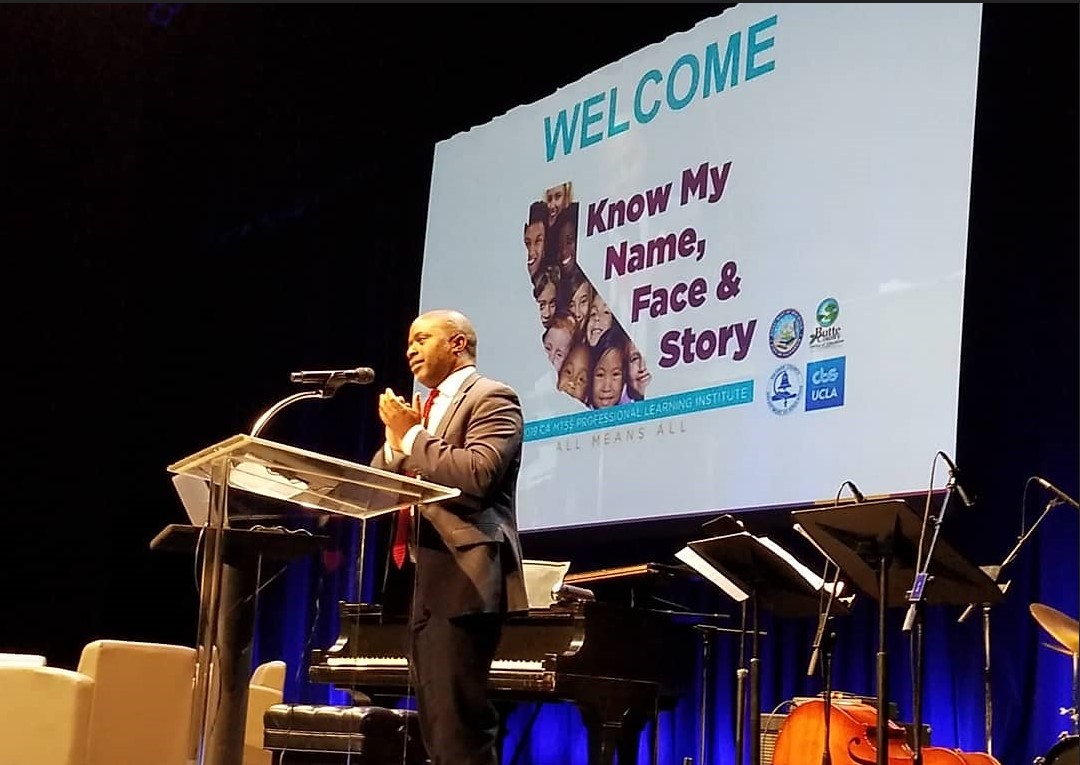From counseling services to chronic absenteeism to disciplinary alternatives, more than 3,000 education professionals converged in Long Beach from July 28–31 to home in on equitably supporting every student with a whole-child approach. Those topics were among the many covered at the third annual California Multi-Tiered System of Support Professional Learning Institute.
The institute’s theme of “All Means All: Know My Name, Face and Story” was present throughout, with speakers and presenters sharing their life and educational stories as examples of the limitless backgrounds students possess, and their futures yet to be told. By using an asset-based approach at school, experts said, one caring adult can make all the difference in the world for a child.
Laying the event’s foundation in their opening keynote, State Superintendent of Public Instruction Tony Thurmond and State Board of Education President Linda Darling-Hammond spoke to the momentum they believe California has toward serving students not only academically, but socially, emotionally and behaviorally. Darling-Hammond said the state is shifting away from the old thinking that educators can either focus on academic learning or social-emotional learning. “It’s never either/or, it’s both/and,” she said, drawing from personal experiences with two of her children, who are dyslexic.
Darling-Hammond said children across the country and in California are facing unprecedented levels of stress and trauma, and that, without leaders adopting a whole-child approach, “in some schools, adversities are compounded when children get there.” Further, a recent national survey found that students at schools that emphasized and integrated social-emotional learning are doing better academically and being better prepared for life post-high school.
While crediting the Local Control Funding Formula with allowing districts to focus resources where they see fit, Darling-Hammond and Thurmond said additional investments in California’s public education system are needed to make more progress and ensure students aren’t left behind on any front.
“Our students should have every support that we can make available to them,” Thurmond said in criticizing the state’s lowly status in ranking 41st in the nation in per-pupil funding. “It’s time to actually put our money where our mouths are,” he added.
From a state policy level, Darling-Hammond described several main areas in driving forward a 21st-century, whole-child approach that can be readily available and built into the state’s System of Support:
- Focus the system on developmental supports for all children. Steps may include additional school climate indicators in the state’s accountability system, providing funding for surveys on school climate, and supports for SEL and social justice training to make them more easily accessible.
- Design schools to provide settings for healthy development and revise the century-old “assembly-line school” approach that is especially prevalent in high school.
- Ensure educator learning is more supported and freely available, “so none of you has to go looking under rocks to meet the knowledge that you need to meet the needs of the children in your school,” she told the crowd largely comprised of teachers.
Additionally, Thurmond said the Department of Education is taking on several new roles and projects, including creating an internal equity office and building a full-service community schools program. The program would support districts and schools in addressing challenges that might be experiencing on their way to providing whole-child supports in community settings, while also removing barriers to learning.
In other institute highlights:
- California Department of Education staff presented a new toolkit that they said addresses the intersectionality of special education and language learning. The California Practitioner’s Guide for Educating English Learners with Disabilities is designed to help with identifying, assessing, supporting and reclassifying California’s 220,000 English learners with disabilities. The guide was developed with the assistance of a coalition comprised of teachers, administrators and staff members from county offices of education, universities, and educational organizations and associations, including CSBA.
- A session focusing on the revised Local Control and Accountability Plan self-reflection tool for parent engagement featured presentations about the importance for districts and schools to understand family engagement. The new tool will be used to report progress in the area in the 2019 version of the California School Dashboard. “More and more, the research is indicating that family engagement is not just this thing that’s on the side,” said Lidia Renteria, CDE education programs consultant.





